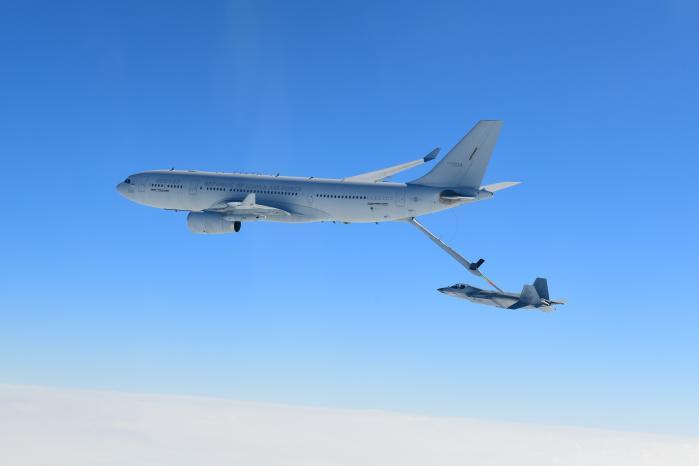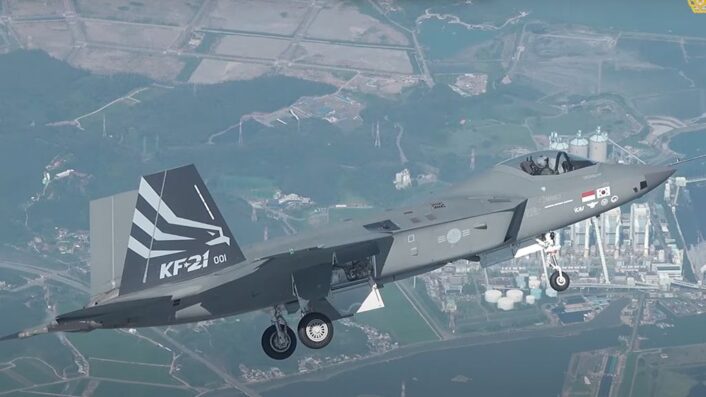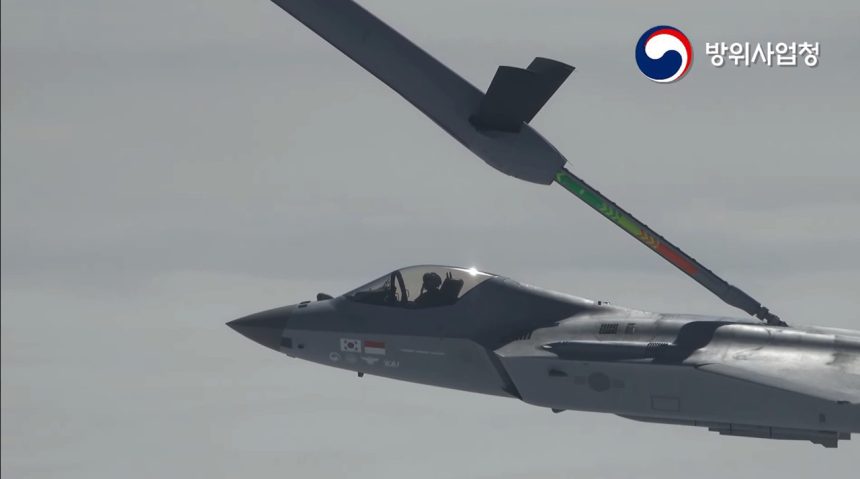A prototype of the South Korea’s domestically developed KF-21 Boramae carried out the first aerial refueling test.
On Mar. 19, 2024, the fifth KF-21 prototype was refueled from a KC-330 multipurpose aerial refueling transport aircraft during the type’s first aerial refueling test.
“KF-21 prototype 5 took off from the runway of the 3rd Air Force Training Wing at 9:45 a.m. today and successfully performed an aerial refueling flight over the South Sea,” said the Defense Acquisition Program Administration (DAPA) in a public statement.
South Korea officially revealed the aerial refueling footage of the KF-21 fighter for the first time.
Mass production is about to commence. Through this, we can now urgently replace old platforms and integrate devastating Korean strike missiles for massive missile fire to… pic.twitter.com/frGDlRAze5
— ハク Mason (@mason_8718) March 19, 2024
The possibility to refuel an aircraft mid-air is crucial to expand the operational range and on-station time of modern aircraft, especially those that don’t carry external fuel tanks to keep their LO (Low Observability).
The KF-21 aerial refueling test began on Mar. 8, when a preliminary inspection assessed the control characteristics of the flying boom of the tanker refueling and its compatibility with the KF-21’s receptacle. Then, on Mar. 19, a flight test was conducted over the South Sea by connecting the refueling boom of a ROKAF (Republic of Korea Air Force) KC-330 tanker to the KF-21 aerial refueling receptacle and transferring the fuel.
During the flight test, the DAPA focused on confirming and evaluating the impact of turbulence occurring behind the tanker and boom, the safe connection and separation from the tanker, and the aerial refueling function such as fuel transfer.

“The success of this aerial refueling flight test is significant in that it can expand the operational radius and operating time of the KF-21, contributing to securing the Air Force’s long-distance operational capabilities as well as strengthening its military power,” said Noh Ji-man, head of the Korea Fighter Program at the DAPA. “The KF-21 aerial refueling test will continue to verify aerial refueling capabilities at various altitudes and speeds through approximately 60 flight tests until March 2025,” he said.
KF-21 Boramae
The KF-21 Boramae, (Korean for “Hawk”), is considered a low-cost, less-stealthy alternative to the U.S. F-35. ROKAF expects to operate it by the 2030s to replace its fleet of ageing F-4E Phantom and F-5E/F Tiger II aircraft. Six prototypes, including two twin-seat aircraft, will support the testing campaign that is expected to last until 2026, when full scale production should begin with KF-21 Block I.
South Korea and Indonesia agreed in 2014 to jointly develop the next generation fighter in a project worth 7.5 trillion won (6.3B US), with Indonesia committed to paying 20% of the total development cost. South Korea is planning to deploy 40 KF-21s by 2028 and a total of 120 by 2032 while 50 should be deployed by Indonesia. For this reason, the prototypes sport the Indonesian flag along with the Korean one during the first flight in 2022.

The KF-21 is strikingly similar to other 5th generation designs (although it is considered a 4.5 gen. aircraft): in particular, the South Korean jet shares much resemblance with the F-22 Raptor including the similar canted twin tails, general nose section and inlet shaping. The “Boramae” also features a conformal gun above the left air intake, as the F-35A. About 65% of the technology used on the KF-21 is of South Korean origin, including the active electronically scanned array (AESA) radar which is currently being tested aboard a modified Boeing 737-500.
The AAR is just one of the milestones in the development of the KF-21: DAPA plans to thoroughly check that actual fuel is transferred from the tanker to the Boramae in various flight areas in the future. Follow-up flight testing will continue until the first half of 2026.









